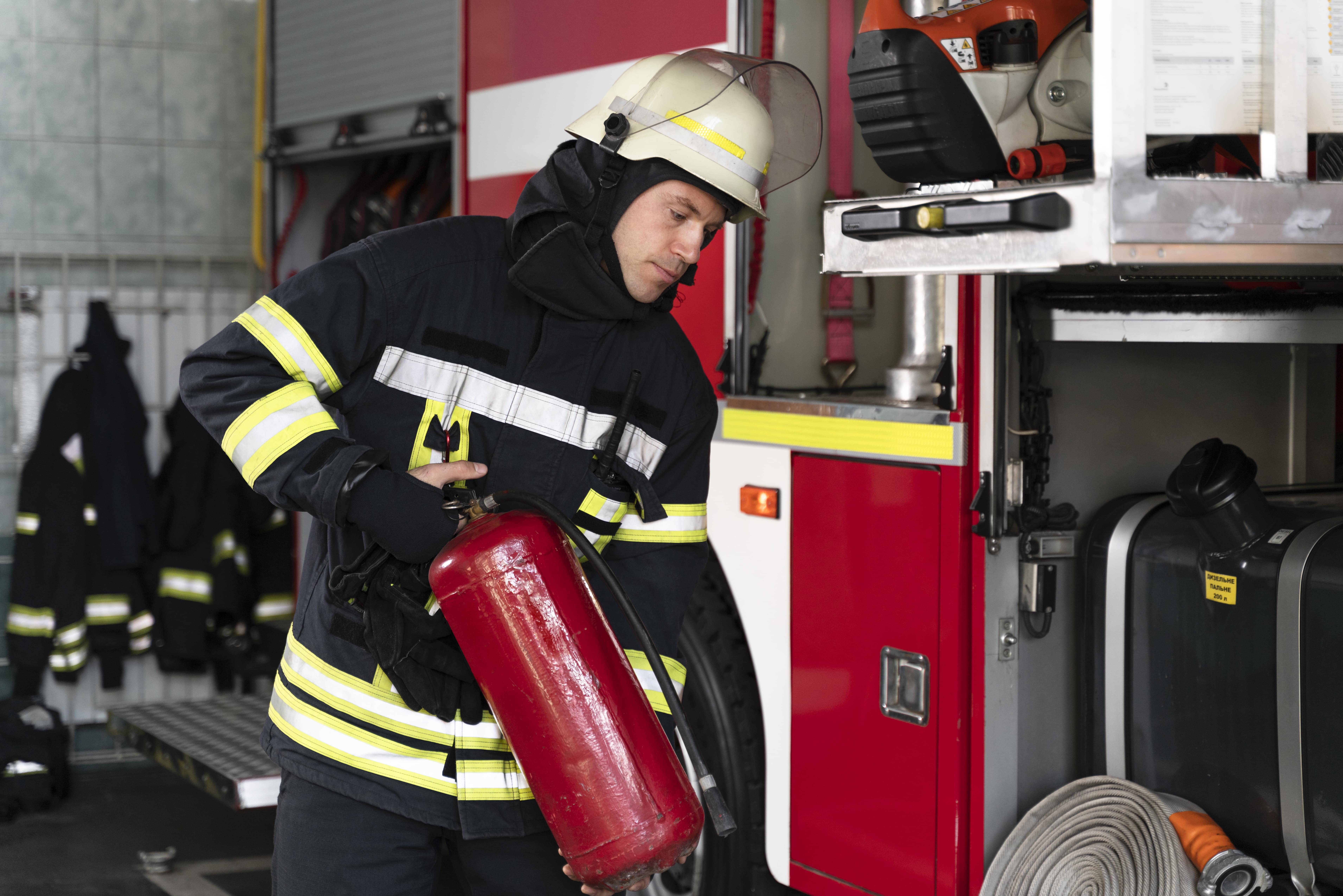Here`s some information to help you understand and implement fire safety measures in the workplace
February 24, 2024

"Fire Safety in the Workplace: Creating a Secure Environment for Employees" is a crucial component of protecting the well-being of both employees and the organization.
Conducting a thorough fire risk assessment of workplace. Identify potential fire hazards, sources of ignition, and the people at risk. This assessment should be carried out regularly and reviewed whenever significant changes occur.
Developing a clear and well-documented emergency evacuation plan. Ensuring that all employees are familiar with the plan and conduct regular drills to practice evacuation procedures.Designating assembly points where employees should gather after evacuating the building.
Installing and maintaining fire detection systems such as smoke detectors, heat detectors, and fire alarms. These systems should be regularly tested to ensure they are functioning correctly. Ensuring that they are connected to a central monitoring system if applicable.
Providing appropriate fire extinguishers and suppression systems based on the type of hazards present in your workplace. Training employees on how to use fire extinguishers safely and effectively. Ensuring that extinguishers are regularly inspected and serviced.
Keeping all escape routes clear and well-lit. Installing proper signage indicating escape routes, exit doors, and fire equipment locations. Making sure these routes are easily accessible and not blocked by obstacles.
Conducting fire safety training for all employees, including new hires. Teaching them how to recognize fire hazards, use fire extinguishers, and respond to fire alarms. Employees should also be aware of the location of fire exits and emergency assembly points.
Regularly inspecting and maintaining electrical systems and equipment to prevent electrical fires. Educating employees about the dangers of overloading circuits, using damaged cords, and practicing safe electrical habits.
If a workplace handles hazardous materials, ensure proper storage, handling, and disposal procedures are in place. Implement safety protocols to minimize the risk of fires caused by chemical substances.
Establishing smoking policies and designate designated smoking areas, encourages employees to follow these policies and provide safe disposal containers for cigarette butts.
Designate employees as first aid and fire safety team members who are trained to provide immediate assistance during emergencies. Ensure they have the necessary equipment and knowledge to perform their roles effectively.
Conducting regular inspections of fire safety equipment, including fire alarms, sprinkler systems, and emergency lighting. Schedule routine maintenance and testing to ensure everything is in working order.
Maintaining thorough records of fire safety inspections, drills, and training sessions. Keeping records of any maintenance or repairs performed on fire safety equipment.
Ensuring that your workplace complies with local, state, and national fire safety regulations and codes. This may involve working with fire authorities and inspectors to ensure adherence.
Establishing clear communication channels for reporting fire hazards and concerns. Encouraging employees to report any potential issues promptly.
Creating a secure environment for employees regarding fire safety is not only a legal requirement in many places but also a moral obligation. It helps protect lives, property, and the continuity of business operations in case of a fire emergency. Regular training, awareness campaigns, and ongoing maintenance are key components of a successful fire safety program in the workplace.